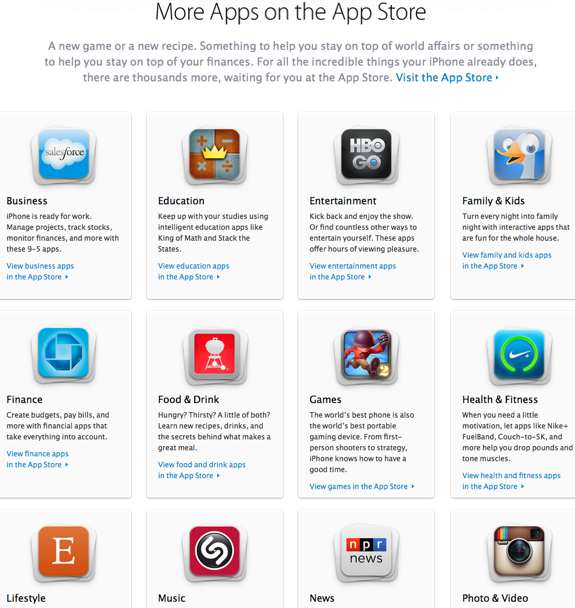Unless you’re living under a rock in distant Mars, you know that the pricey iPhones and the iPad tablets are mega-hits and huge money-spinners for Apple.
But an iPad, iPod touch or iPhone is junk, an useless sexy-looking piece of glass and metal, in the absence of applications to give life to it.
Not surprisingly, Apple tends to boast of the huge number of applications available for its iOS mobile platform and surely the large number of apps are a delight to buyers of the iPad and the iPhone.

By our estimate, there are about 800,000 apps for the iPhone, iPod touch and iPad together. The majority are built for the iPhone although they do run on the iPad as well.
That massive number of apps and huge base of Apple consumers sure paints a rosy picture for would-be App developers in the Apple iOS platform.
As many as 275,000 developers have registered with Apple to build applications for the company’s platforms by forking out $99.
Apple even claims that its “app revolution has added more than 291,250 iOS jobs to the U.S. economy since the introduction of iPhone in 2007.” Well, talk is cheap and it’d be hard to defend that claim but, then, Apple has always been a whiz when it comes to marketing itself.
Well, all that hype has tempted many an American developer to join the bandwagon with dreams of millions of downloads and millions in the bank!
Money-Spinner?
But can developing apps for Apple’s iOS platform be a money-spinner for you?
Let’s look at the numbers before coming to a conclusion one way or the other.
How many applications are available for the iPad?
As of December 20, 2012 there were 292,998 applications for the iPad alone and another 500,000 for the iPhone.
From PDF Doc readers to calendars to recipe guides, dictionaries, games, music and movies, the apps cover a wide gamut.
With so many applications out there on the AppStore already, you can be sure virtually every category you can dream up is already chock-full of apps.
Visibility Problem
It’s also very hard for any new application to stand out amidst this huge clutter of 800,000 apps.
A lot of developers, however good they are technically, find it difficult to gain visibility for their apps.
Promoting an app and creating buzz are entirely different ball-gamesfrom building an app.
After spending countless man-hours and mucho dollars on building the app, few developers have the money to invest in marketing.
Without marketing, you are sunk.
Discoverability of new apps on the Apple AppStore is a major, major problem.
You can be sure that even a modern-day Einstein wouldn’t be able to create an impact in the AppStore without generating buzz about his “Unified Theory.”
Cloner Problem
Just when you think you’ve developed an awesome app and launched it on the AppStore, come the spoilers in the form of cloners from India, China and elsewhere offering an app similar to yours for less or in worse case scenarios for free.
Soon there’s little to distinguish your app and that of the cloners.
Of course, consumers couldn’t care less that you were the first because all they want is a cheap or, better still, preferably free app.
Consumers’ Entitlement Mentality
It’s also our hypothesis that after having forked out a hefty sum for their iPads and iPhones and iPods consumers are extremely reluctant to invest on spending any money on apps.
Worse, consumers have developed an entitlement mentality that all apps should be free or near-free.
Pricing an app above 99-cents makes the odds of it success remote.
A lot of times developers have struggled to sell their apps even at 99-cents. But once they cut the price from 99-cents to Free, the downloads surge into the tens of thousands as happened in the case of @Timer.
We have encountered similar consumer behavior in Amazon’s Kindle e-book store. Consumers are unwilling to invest even 99-cent in a value-laden book but queue up at the trough if it’s offered free.
When you’ve invested countless hours toiling away on building an app, you’re entitled to expect a fair return on your hard work.
But developers’ reasonable expectation of a fair price often clashes with consumers’ entitlement for a free app.
And with so much choice in applications, the Apple consumer has the upper hand vis-a-vis the developer.
Bottom Line – Dim Prospects
Given the several insurmountable challenges, most small developers would be well advised to stay off the Apple AppStore and try their luck elsewhere.
Very few App developers for the Apple iOS platforms in America are really hitting it big in terms of revenues. The return on investment is pretty abysmal for most AppStore developers now.
Some developers believe 90% of the apps don’t even break even, meaning a huge loss to the developers.
Apple may toot its horn that it’s forked out $6.5 billion to iOS developers but at least half of it is to developers outside the U.S.
The vast majority of American iOS developers are not seeing the hoped-for pot of gold at the end of the development process but encounter only frustration and disappointment.
The bottom line is that Apple’s AppStore is meant to drive sales of the company’s hardware, the iPod touches, iPhones and iPads, and is not geared toward small software developers making money off their apps.

Sorry, the comment form is closed at this time.